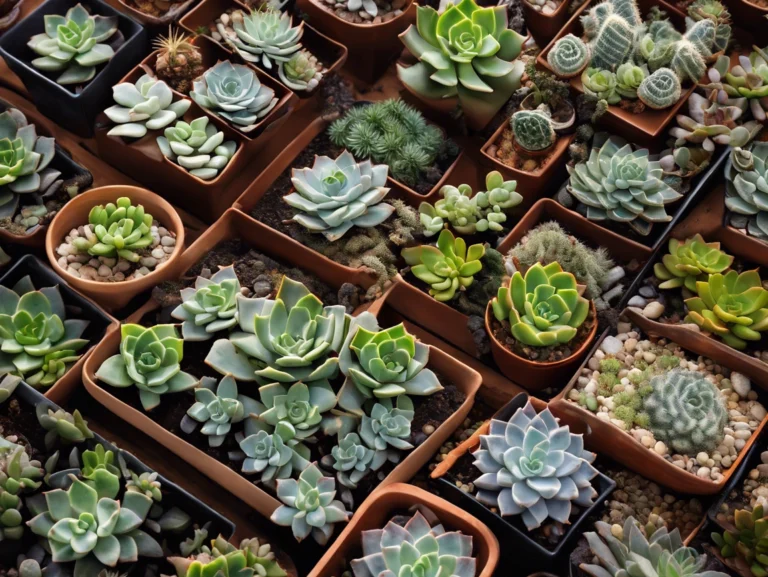How Do Smart Self-Watering Planters Work? Complete Guide for 2025
Did you know that the average houseplant owner spends over 30 minutes per week just on watering? I discovered this startling fact after killing my third fiddle leaf fig tree due to inconsistent watering. That’s when I dove headfirst into the world of smart self-watering planters, and what I discovered completely transformed my approach to indoor gardening!
Table of Contents
As someone who’s been testing and reviewing these systems for years, I’ve seen the technology evolve from simple reservoir systems to sophisticated IoT-enabled growing solutions. In this comprehensive guide, I’ll break down exactly how these innovative planters work, what to look for when choosing one, and how to get the most out of your investment.
Understanding Smart Planter Technology:

Smart self-watering planters represent the intersection of traditional gardening wisdom and modern technology. At their core, these systems automate the most crucial aspect of plant care: water delivery. But what makes them truly “smart” is their ability to monitor, adjust, and optimize growing conditions in real-time.
The technology behind these systems has come a long way since the first self-watering planters were introduced in the 1990s. Today’s smart planters don’t just water your plants – they create a controlled growing environment that can significantly improve plant health and growth rates.
Self-Watering Planters: Core Components
Let me break down the essential parts that make up a smart self-watering planter. After setting up dozens of these systems, I’ve found that understanding these components is crucial for successful operation.
- Water Reservoir: The foundation of any self-watering system is its reservoir. Most models I’ve tested feature a double-bottom design, with the lower chamber serving as a water storage tank. Capacity typically ranges from 2-4 weeks’ worth of water, depending on plant type and size.
- Wicking System: The wicking mechanism is what I like to call the “root” of the system. It uses capillary action to draw water up from the reservoir to the growing medium. Different manufacturers use various materials:
- Synthetic fiber wicks
- Porous ceramic plates
- Capillary mats
- Specialized soil mixtures
- Growing Chamber: This is where your plant lives. The best systems I’ve encountered use a specialized growing medium that optimizes:
- Water retention
- Root aeration
- Nutrient distribution
- Drainage control
- Smart Sensor Array: Modern planters employ multiple sensors to monitor growing conditions:
- Soil moisture sensors
- Temperature probes
- Light level meters
- Humidity sensors
- pH monitors (in premium models)
- Control System: The “brain” of the operation includes:
- Microprocessor
- WiFi/Bluetooth module
- Power management system
- User interface (either on-device or via app)
Self-Watering Planters: The Smart Irrigation Process
Here’s where things get really interesting! The irrigation process in smart planters is far more sophisticated than simple timed watering. Let me walk you through what happens during a typical watering cycle.
- Monitoring Phase:
- Sensors continuously gather data about soil moisture levels
- Temperature and humidity readings are recorded
- Light exposure is measured
- Some systems even track nutrient levels
- Data Analysis:
- The control system processes sensor data
- Compares readings against optimal parameters for your specific plant
- Considers environmental factors and historical watering patterns
- Makes real-time adjustments to watering schedules
- Water Delivery:
- When moisture levels drop below the preset threshold, irrigation initiates
- Water is drawn up through the wicking system
- Distribution occurs evenly throughout the growing medium
- Sensors monitor the process to prevent overwatering
- Feedback Loop:
- System records watering data
- Adjusts future watering cycles based on plant response
- Sends notifications to your smartphone if action is needed
- Updates growing parameters based on seasonal changes
Types of Smart Self-Watering Systems:
Through my testing, I’ve identified several distinct categories of smart self-watering planters:
- Basic Smart Systems:
- Simple moisture sensing
- Automated watering
- Basic app connectivity
- Suitable for beginners
- Advanced IoT Planters:
- Full sensor array
- WiFi connectivity
- Detailed data tracking
- Remote monitoring capabilities
- Hydroponic Smart Planters:
- Water-based growing
- Nutrient monitoring
- pH management
- Advanced growing algorithms
- Multi-Plant Systems:
- Multiple growing zones
- Independent watering control
- Scalable design
- Perfect for larger collections
Setting Up Your Smart Planter:
Based on my experience, here’s the optimal setup process:
- Initial Setup:
- Clean all components thoroughly
- Install any required batteries or power supplies
- Connect to WiFi network
- Download and set up companion app
- Growing Medium Preparation:
- Use recommended soil mix
- Avoid compacting the medium
- Leave appropriate air gaps
- Position wicking elements correctly
- Plant Installation:
- Choose appropriate plant size
- Position root ball correctly
- Add any required nutrients
- Set initial watering parameters
- System Configuration:
- Input plant type
- Set watering preferences
- Configure notification settings
- Calibrate sensors
Self-Watering Planters: Maintenance and Troubleshooting
Regular maintenance is crucial for optimal performance. Here’s what I’ve learned works best:
Weekly Tasks:
- Check water levels
- Monitor plant health
- Clean external sensors
- Review system notifications
Monthly Tasks:
- Clean water reservoir
- Check wicking system
- Verify sensor accuracy
- Update software if needed
Common Issues and Solutions:
- Sensor Inaccuracy:
- Recalibrate sensors
- Clean sensor probes
- Check for interference
- Verify proper placement
- Poor Water Distribution:
- Clean wicking system
- Check for blockages
- Verify proper soil composition
- Adjust water flow settings
- Connectivity Problems:
- Update firmware
- Check WiFi signal strength
- Reset connection
- Verify app compatibility
Self-Watering Planters: Benefits and Limitations
After years of using these systems, here are the main advantages:
Benefits:
- Consistent water delivery
- Reduced plant stress
- Water conservation
- Time savings
- Remote monitoring
- Improved plant growth
- Vacation-proof care
Limitations:
- Initial cost
- Technical learning curve
- Potential sensor issues
- Limited plant sizes
- Power dependency
self-watering planter: Choosing the Right System
Consider these factors when selecting a smart planter:
- Plant Type:
- Water requirements
- Growth habits
- Root system
- Mature size
- Environmental Factors:
- Available light
- Temperature range
- Humidity levels
- Space constraints
- Technical Requirements:
- WiFi availability
- Smartphone compatibility
- Power source
- App features
- Budget Considerations:
- Initial investment
- Operating costs
- Replacement parts
- Warranty coverage
Future of Smart Planter Technology:
The smart planter industry continues to evolve. Here are some emerging trends:
- AI Integration:
- Machine learning algorithms
- Predictive maintenance
- Automated plant identification
- Growth optimization
- Enhanced Connectivity:
- 5G integration
- Smart home ecosystem
- Voice control
- Social sharing features
- Sustainable Features:
- Solar power options
- Water recycling
- Biodegradable components
- Energy efficiency
Conclusion:
Smart self-watering planters represent a significant leap forward in plant care technology. They combine the best of traditional growing methods with modern automation and monitoring capabilities. While they require some initial investment and learning, the benefits in terms of plant health, time savings, and peace of mind are substantial.
As someone who’s experienced both the frustrations of manual plant care and the convenience of smart systems, I can confidently say that these devices are worth considering for any serious plant enthusiast. The key is choosing the right system for your needs and taking the time to set it up properly.
Remember, even the smartest planter can’t completely replace human attention – but it can certainly make plant care more manageable and successful. Whether you’re a busy professional, frequent traveler, or just looking to optimize your indoor garden, smart self-watering planters offer a compelling solution for modern plant care.
Have you tried using a smart planter? I’d love to hear about your experiences in the comments below. And if you’re just getting started, what features interest you the most?



